As community needs shift, many churches are finding new life by opening their doors to a wider range of users, from partner congregations to local organizations and event groups. More people in the building mean higher expectations for comfort, rising energy demands, and growing costs, especially in older buildings. At Trinity United Church in Grimsby, Ontario, this reality came to a head in 2023. In response, the church upgraded its building to ensure its space could remain both welcoming and sustainable.
“Like many small-town churches these days, ours is an important community resource. We’re an old congregation in an old building, and we recognize the need to make that space both comfortable and useful,” states Ken Pettigrew, Board Member at Trinity United Church, Grimsby, Ontario
Over the years, Trinity United has made steady improvements to its facilities with a focus on sustainability and energy efficiency. Upgrades include energy-efficient lighting, windows, and doors, as well as regular caulking and sealing to prevent heat loss. Trees were planted on the property to provide natural shade and reduce cooling needs, and solar panels were installed on three roofs, which feed into the local grid and generate income for the church.
Meeting the needs of members, tenants, and the local community
In late 2023, two significant events occurred at Trinity United that brought attention back to the comfort and energy efficiency of its buildings.
Trinity United’s long-time neighbors and the founders of the congregation, St. John’s Presbyterian, sold their building and joined as tenants, coming full circle by worshipping once again in the space they had built in 1853. Their return raised concerns about the heating, and perhaps more importantly, the cooling of Memory Hall, the original 1889 structure, which would now serve both as their new worship space and as Trinity’s primary community hall.
At the same time, Trinity’s Board had been struggling with the already rising energy costs. Despite past upgrades, including energy-efficient windows and doors, maintaining comfort and controlling costs remained an ongoing challenge.
“Our experience of heating a virtually empty building during the COVID-19 years brought the matter to a head. An energy audit not only confirmed how much our costs were rising, but also revealed the full extent of our growing carbon footprint – Our heating issue had become not simply a financial burden but also and perhaps more importantly, an ecological and theological one.” shares Pettigrew

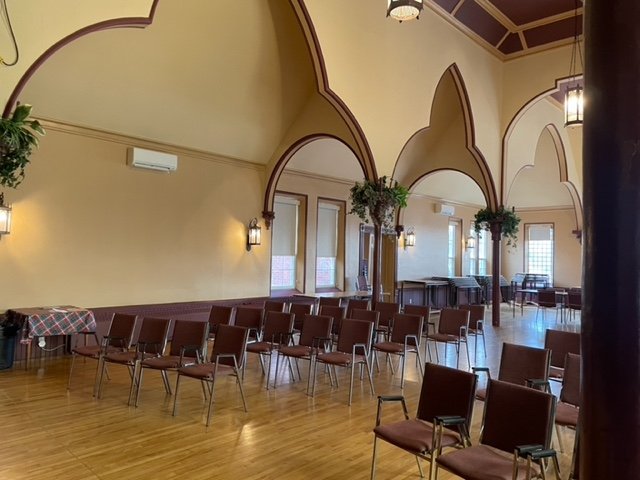
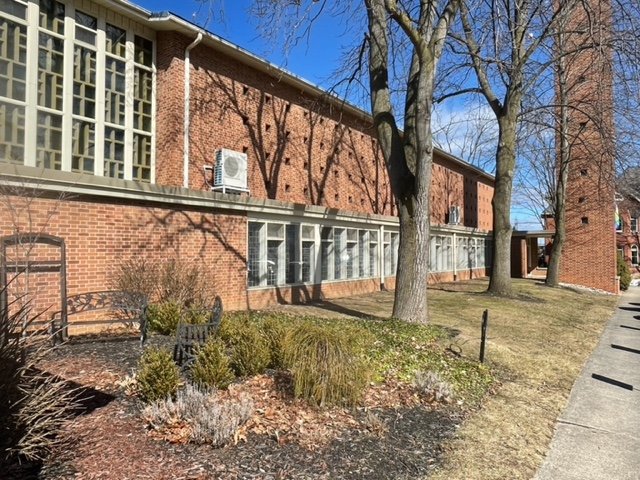
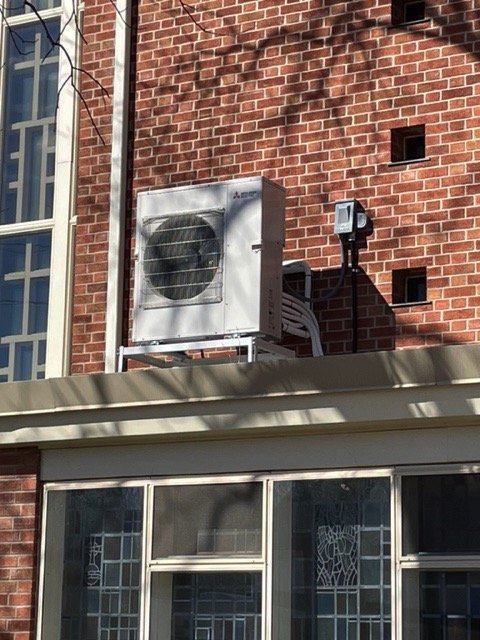
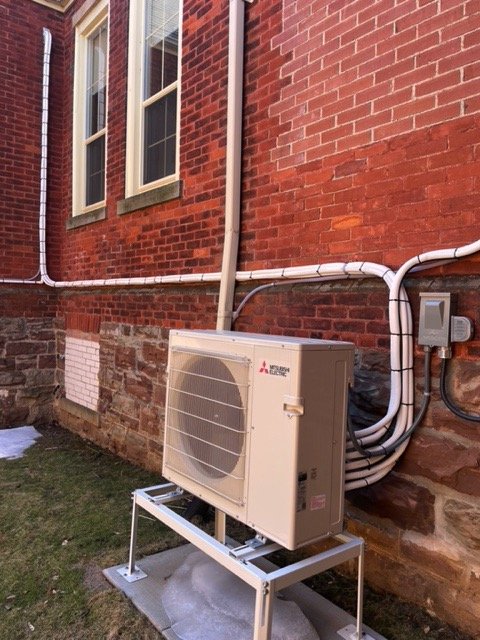
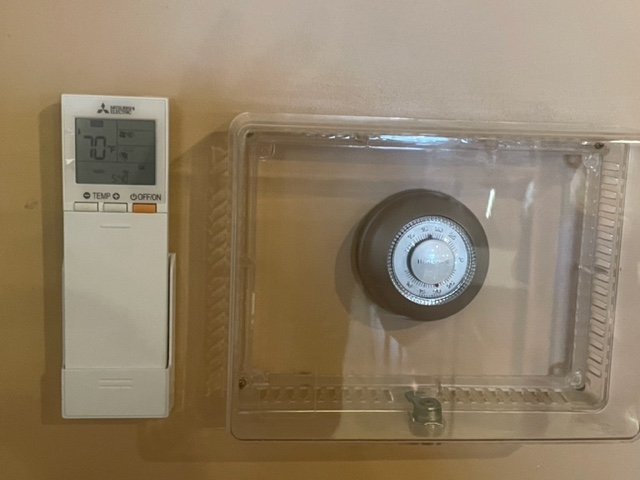

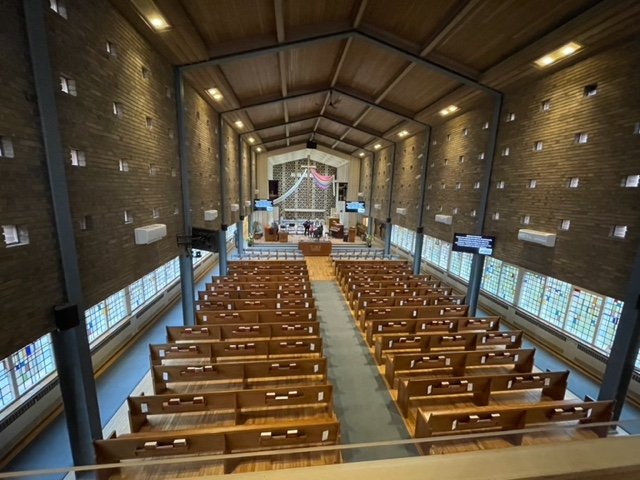
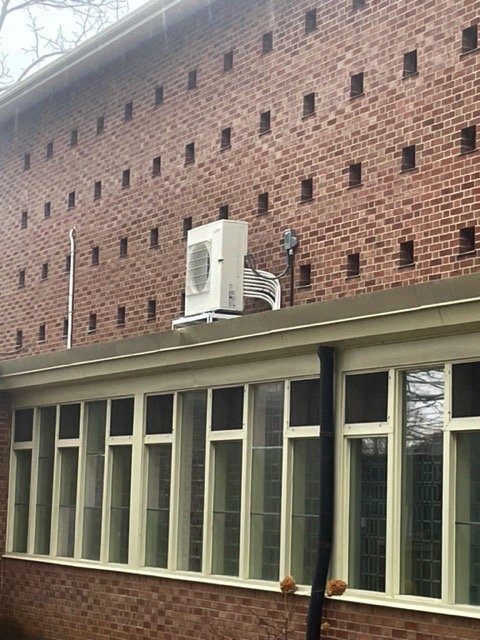
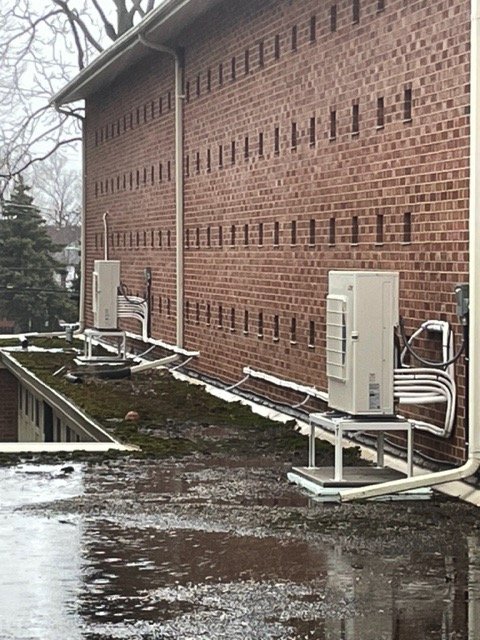
A solution for increased building usage
As Trinity United Church explored various options, heat pumps began to make sense—their heating and cooling capacity, combined with their efficiency and their potential to reduce reliance on natural gas, made them a great alternative. While not eliminating the need for natural gas, the heat pumps offered the opportunity to drastically reduce gas consumption in the church’s two largest spaces: its Memory Hall, the original sanctuary now serving as the main meeting place, and the newer 1958 sanctuary.
“We had several significant tenants who were asking for air conditioning, and we had always resisted due to cost and impact. Heat pumps offered us a way to reduce our carbon usage while improving the comfort of our facilities,” states Pettigrew
The project was made possible by a generous donation from the church’s new neighbors, St. John’s Presbyterian, who donated a significant sum toward the project. Combined with a major grant from the Faithful Footprints program, this support allowed the Trustees to cover the remaining costs and proceed with the installation of 16 mini-split heat pumps in the two key spaces.
“The impact was immediate—even with our natural gas boilers turned down to ‘barely on,’ the comfort levels in our rooms noticeably improved, and folks would actively comment on it. We fully expect that the installation of these heat pumps will not only enhance the usefulness of our facilities to the community but also serve as a model of energy efficiency and carbon reduction for the town. We are hoping that they will also increase the attractiveness of our facilities for community activities and potential rentals, which will in turn allow us to continue as a faith community and a community asset.” reflects Pettigrew
Faithful Footprints Program
The United Church of Canada’s Faithful Footprints program offers inspiration, tools, and grants to help its faith communities reduce their carbon footprint. With the Church’s commitment to reducing its greenhouse gasses (GHG) emissions by 80% by 2030, this one-of-a-kind program offers up to $30,000 in grants towards energy conservation and renewable energy projects (conditions apply).
Faith & the Common Good is the delivery partner for the Faithful Footprints program. To date, we have engaged over 500 congregations, camps, and buildings across the country. Your participation in the program puts your faith into action and helps the Church reach its target.

